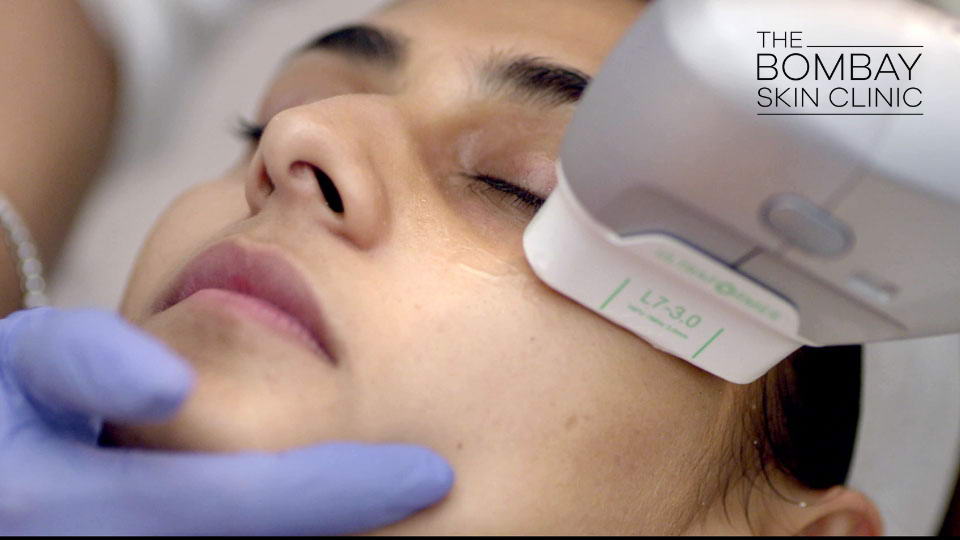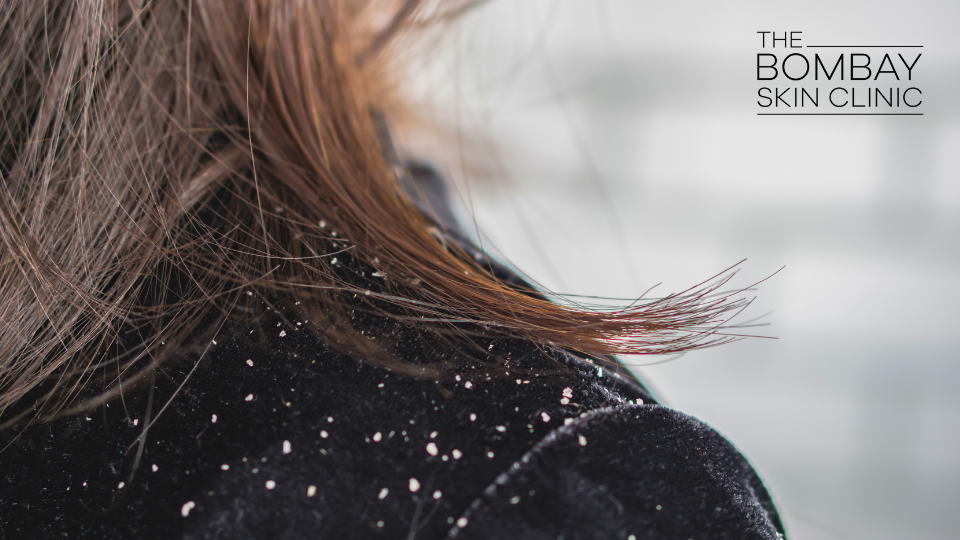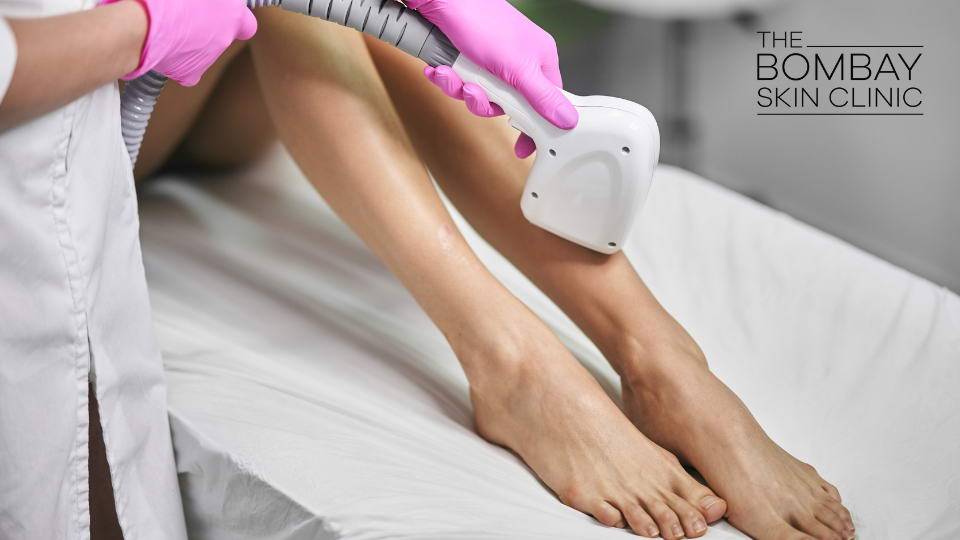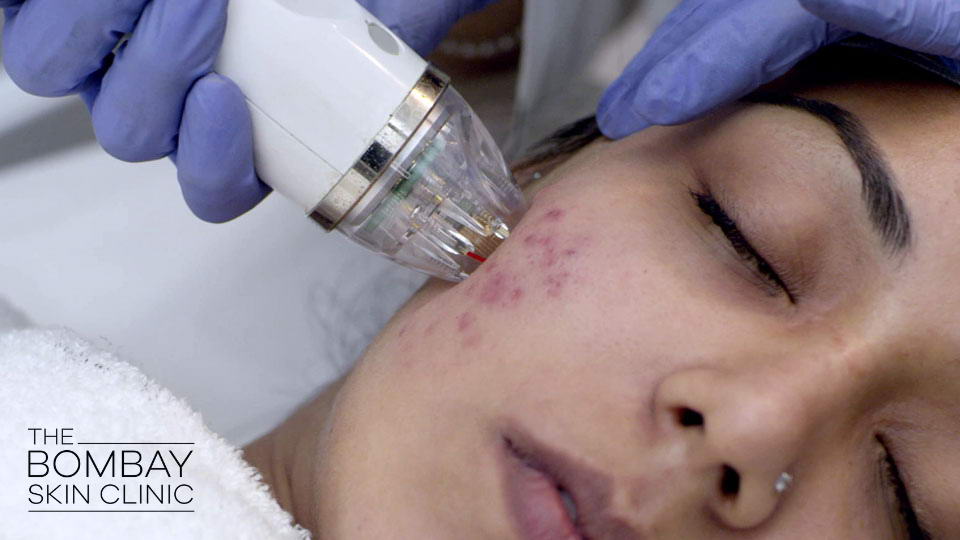Overview | What is HIFU | Important points | Benefits and ideal candidates | Why should you get one | HIFU vs. facelifts | How treatment feel like | Expected results | Prepare before treatment | Treatment steps | Risks and future care
Let us introduce the HIFU facial, which is the High-intensity Focused Ultrasound facial. Many of our patients, who have opted for this treatment, have seen fantastic results and walked out of the clinic with rejuvenated and younger skin, finally bidding adieu to loose skin.
Let’s take a look at the particulars of a HIFU facial in more detail.
What is a HIFU or skin tightening facial?
As the name suggests, a HIFU facial uses ultrasound energy for skin tightening, making it a rather non-invasive and painless treatment. The energy used encourages the production of collagen, which results in you getting the firmer, tighter skin that you have always desired.
HIFU was first approved by the United States’ Food and Drug Administration (FDA) for brow lifts in 2009. After this, five years later, the FDA approved it for treating wrinkles and lines on the neckline or upper chest.
At The Bombay Skin Clinic, we use the Ultraformer III, which is a completely non-invasive body contouring and tightening device to treat the face, as well as certain parts of the body.
Important points to note about this particular facial
The ultrasound energy is used to target the layers of the skin that are right below its surface. The energy makes the tissue heat up quickly. After the skin cells in the designated area reach a particular temperature, they begin to go through cellular damage, which helps in the stimulation of the cells to manufacture more collagen. This is a protein that gives your skin structure.
The boosted collagen production gives your skin a firmer and tighter feel and look, reducing wrinkles, as also noted by the National Center for Biotechnology Information. Because the ultrasound beams are targeted to certain tissue sites under the surface of the skin, the upper layers of the skin and adjacent tissue suffer no damage.
Patients who have a high degree of loose skin or with photodamaged skin may require multiple sessions to see the desired results.
Older people with severe skin laxity, very saggy skin, or extensive photo-aging may not be ideal candidates for this treatment. Moreover, a HIFU facial is not recommended for people with metallic implants near the treatment area, cystic acne, open skin lesions, and infections.
The energy used in HIFU is significantly different from other energies like Electrical (Radio-frequency) energy and light energy, which is the IPL energy. It protects the skin surface, whilst penetrating at deeper depths and higher temperatures than radiofrequency. It treats beyond the foundation and dermis layers, where structural weakening starts.
Benefits of this treatment
A HIFU facial has nearly countless benefits for your skin. As noted by the American Society for Aesthetic Plastic Surgery, it has gained immense popularity over the last few years. Such a facial can:
- Smoothen the skin
- Tighten the décolletage
- Enhance the jawline definition
- Lift eyelids, eyebrows, and cheeks
- Tighten sagging neck skin, which is often called ‘turkey neck’
- Reduce wrinkles
Ideal candidates
You should note that a HIFU facial will not work for people with more severe cases of sagging skin. Hence, you should have moderate skin laxity to be suitable for this treatment. We recommend this treatment for patients who have ‘relaxed’ skin, which looks less firm. The first signs of maturing skin are a lowered eyebrow line and sagging skin. So, good candidates are those in their 30s or slightly older people with mild to moderate skin laxity.
Why should you get one?
A HIFU facial is ideal for you if you have the following concerns:
- Skin folds
- Signs of aging
- Loose and sagging skin
- Wrinkles and fine lines
- V-line contouring
- Decrease in skin elasticity
At The Bombay Skin Clinic, we conduct a thorough evaluation of your skin and its unique needs before recommending this line of treatment.
HIFU vs. Facelifts
It is quite well-known that HIFU facial has significantly fewer risks and costs lower as compared to a facelift. While the former is non-invasive and makes no incisions, the latter is an invasive procedure that requires sutures and incisions. The former requires no downtime while the latter requires at least two to four weeks of rest post-treatment. The risks with HIFU are only mild redness and a little swelling. On the other hand, a facelift brings with it risks associated with anesthesia, infection, bleeding, hair loss at the incision site, scarring or pain, and blood clots. However, do note that the results from a facelift, may last much longer than the results from a HIFU facial.
How will the treatment feel like?
This is the most commonly asked question by our patients at the clinic. You can experience some slight discomfort. You may feel a slight prickly sensation from the tiny electric pulses of high-focused ultrasound energy. This is a very safe procedure, as noted by the Journal of the American Academy of Dermatology. Generally, patients do not report feeling any pain. If you are concerned about pain, our doctors will recommend you take a non-steroidal anti-inflammatory drug like Advil or Tylenol, which is an acetaminophen, before the facial.
Right after the facial is complete, you will experience some mild swelling and redness, which will reduce over the next couple of hours.
Results to expect
The results you can expect are tighter and firmer skin with visibly less fine lines and wrinkles. Well-toned and younger-looking skin has never been this easy to achieve!
Some of our patients see immediate results; however, the overall toning and lifting results appear within two to three months after the treatment. This is because it takes time for new collagen to replace the tired collagen. As this process continues, you can expect to see good results up to six months post-procedure.
The results can last for over a year. Depending on the condition of your skin, it can last for longer. This is why we encourage all of our patients to seek touch-up appointments to help keep up with the aging process.
How to prepare before the treatment
There is no special preparation needed before a HIFU facial. All you need to do is remove all your make-up and cleanse your face to prepare the targeted area. If you are on certain medications that can interfere with the treatment, the doctor will recommend that you quit taking them a few days prior to the procedure.
A week before the treatment, avoid sun exposure and tanning. If you are using any skin irritants, this practice should be stopped. The list includes retinol products, salicylic acid, and glycolic acid.
The day before the treatment, let our doctor know if you have a history of cold sores or fever blisters so that an anti-viral medicine can be given to you.
Steps involved in the facial
During the HIFU facial, a technician or physician will cleanse the targeted area and apply a topical anesthetic cream to numb the area. After this, they will apply the ultrasound gel to allow the device to glide against the skin smoothly. Then, the HIFU device is placed against the skin.
The technician or physician will adjust the device to the right setting using the ultrasound viewer. In short pulses for almost 30 to 90 minutes, the ultrasound energy is then delivered to the targeted site. After this period, the device is removed and the skin is cleaned again.
During the process, you will feel the heat and some tingling. If additional sessions are required, we will help you schedule your next appointment.
Will it hurt?
Since every patient’s pain threshold is different, the answer to this question varies among cases. You may experience slight discomfort as the ultrasound energy is delivered. The prickly feelings are only temporary. However, do remember that any feelings you experience are a positive sign that the treatment is working its magic on your skin.
How often to get a HIFU treatment
Many of our patients require only one treatment session; however, others can benefit from multiple sessions. Thus, the answer to this depends on how much skin laxity you have and your body’s biological response to the collagen-building and ultrasound process. After a complete check-up and study of your skin, we can recommend the number of sessions you will require.
How long these facials usually last
The answer to this varies from patient to patient and case to case and on what the treatment is targeting. Usually, a full-face treatment lasts between 45 minutes to an hour, while a brow or partial face treatments only last for 30 minutes.
Steps to follow after the facial
Since your face will be a little extra sensitive after the treatment, we recommend that you do not engage in strenuous exercises for a few days. Protect your skin from the sun as you leave the clinic, and do not touch your face to prevent irritation and other side-effects.
Risks/side effects of the facial
At The Bombay Skin Clinic, only qualified and trained professionals carry out this treatment, so you are always in safe hands. As mentioned earlier, temporary swelling and redness will subside in a few hours. For a few weeks, you may still feel a slight tingling sensation on the treated site. Rarely, patients experience temporary bruising or numbness, which goes away automatically after a few days. We make every effort to ensure that risks and side-effects are minimized to ensure your comfort and safety during and after the treatment. Rarely, blisters or bruises may develop, for which an antibiotic ointment can be used twice daily until healed.
Immediate and future care after the treatment
Since there is no downtime after this treatment, you can resume your daily activities almost immediately. For this reason, HIFU is often called a lunchtime facial. Make-up can be applied almost immediately and you can resume tweezing and waxing three days post-treatment.
Resume your daily skincare routine from the next day. A light moisturizer and non-exfoliant cleaner can be used immediately after treatment. Avoid saunas and steam rooms. Skin irritants like Vitamin C, retinol products, benzoyl peroxide, salicylic acid, and glycolic acid can be resumed three days post-treatment. Use a daily sunblock to minimize irritation and maximize results, with an SPF 30 or higher and zinc oxide.
Our doctors will help you chart out an effective post-treatment care plan to help you get the most out of the treatment.
Closing paragraph
Strengthen your skin with renewed collagen and enjoy firmer, tighter, and younger-looking skin after a simple, effective, non-invasive, and safe treatment! Book an appointment at our clinic and let us help you restore your aesthetic beauty today!
References
- American Society for Aesthetic Plastic Surgery: https://www.surgery.org/sites/default/files/ASAPS-Stats2017.pdf
- National Centre for Biotechnology Information: https://www.ncbi.nlm.nih.gov/pmc/articles/PMC4695420/
- Journal of the American Academy of Dermatology: https://www.jaad.org/article/S0190-9622(15)01196-2/abstract






